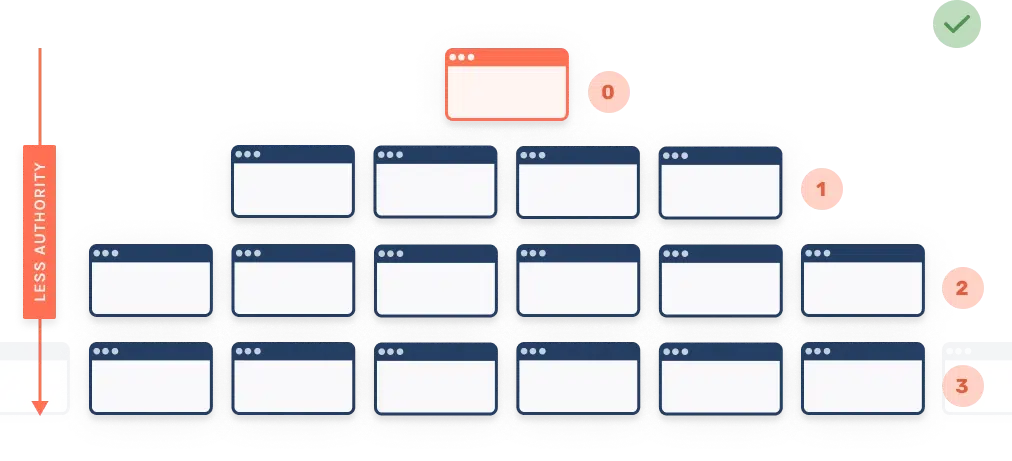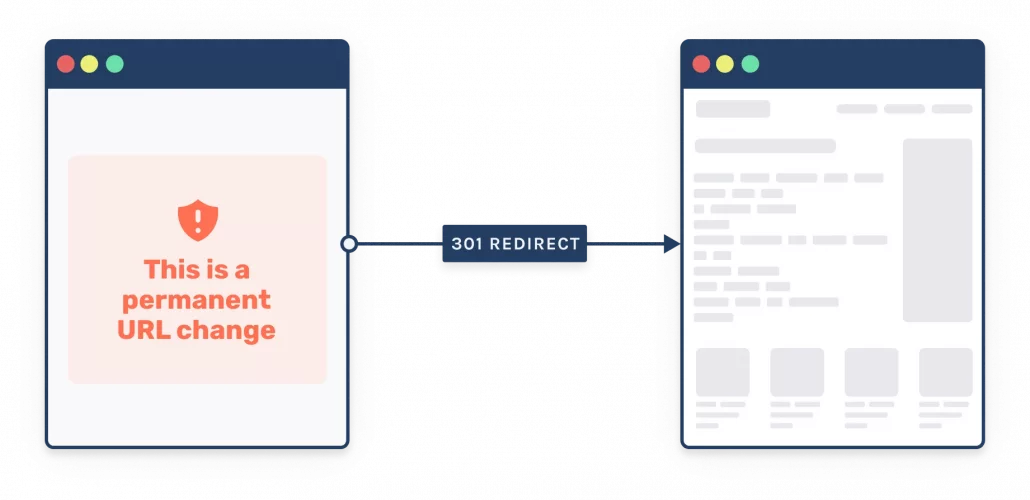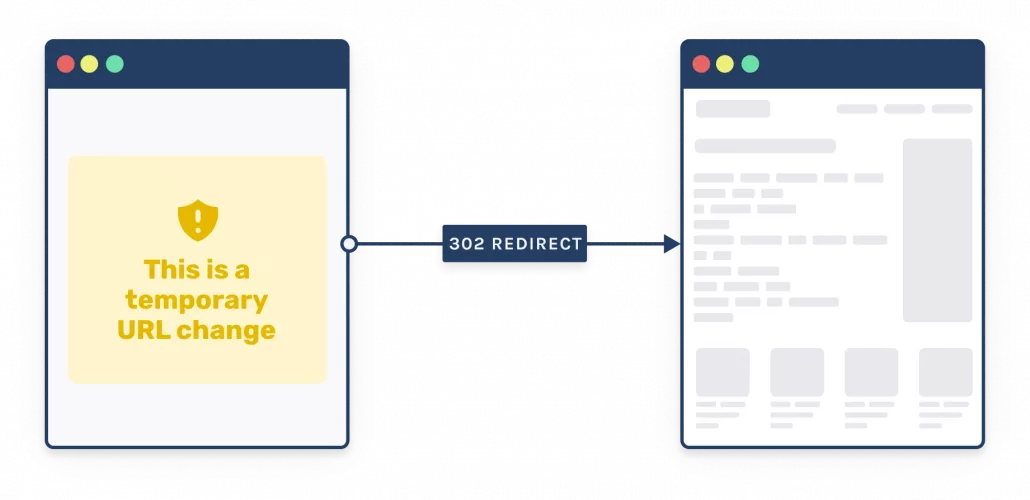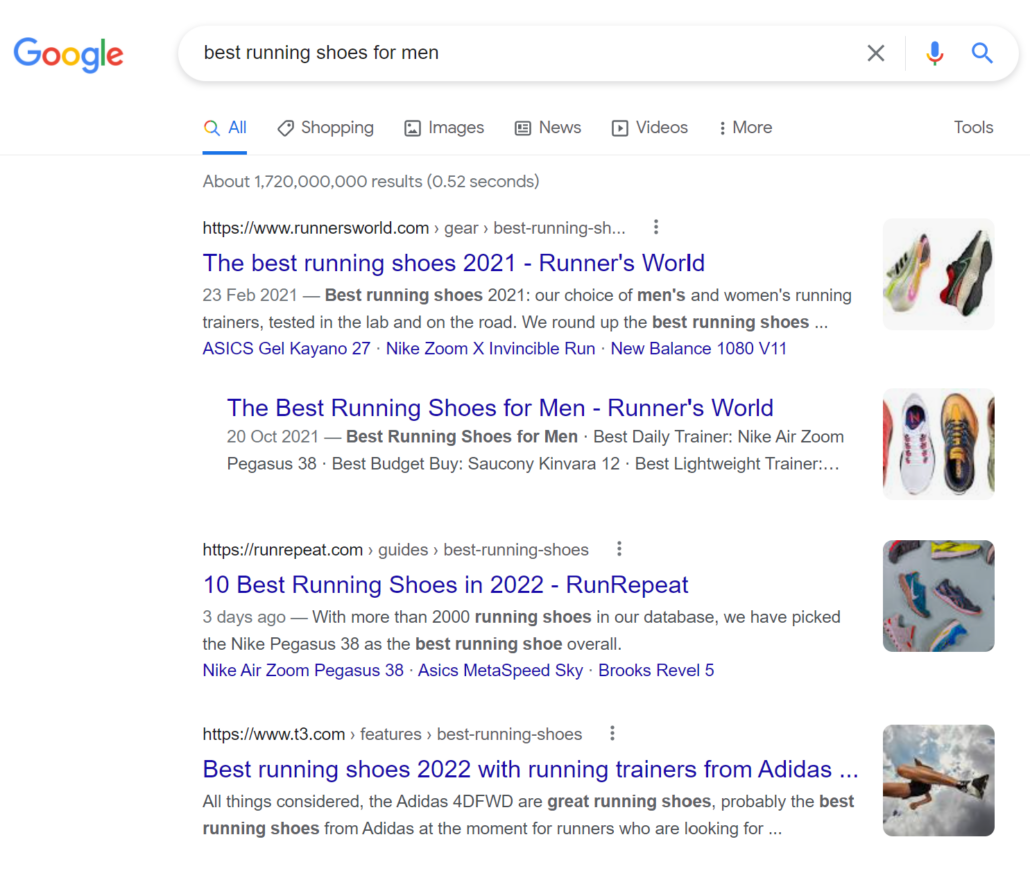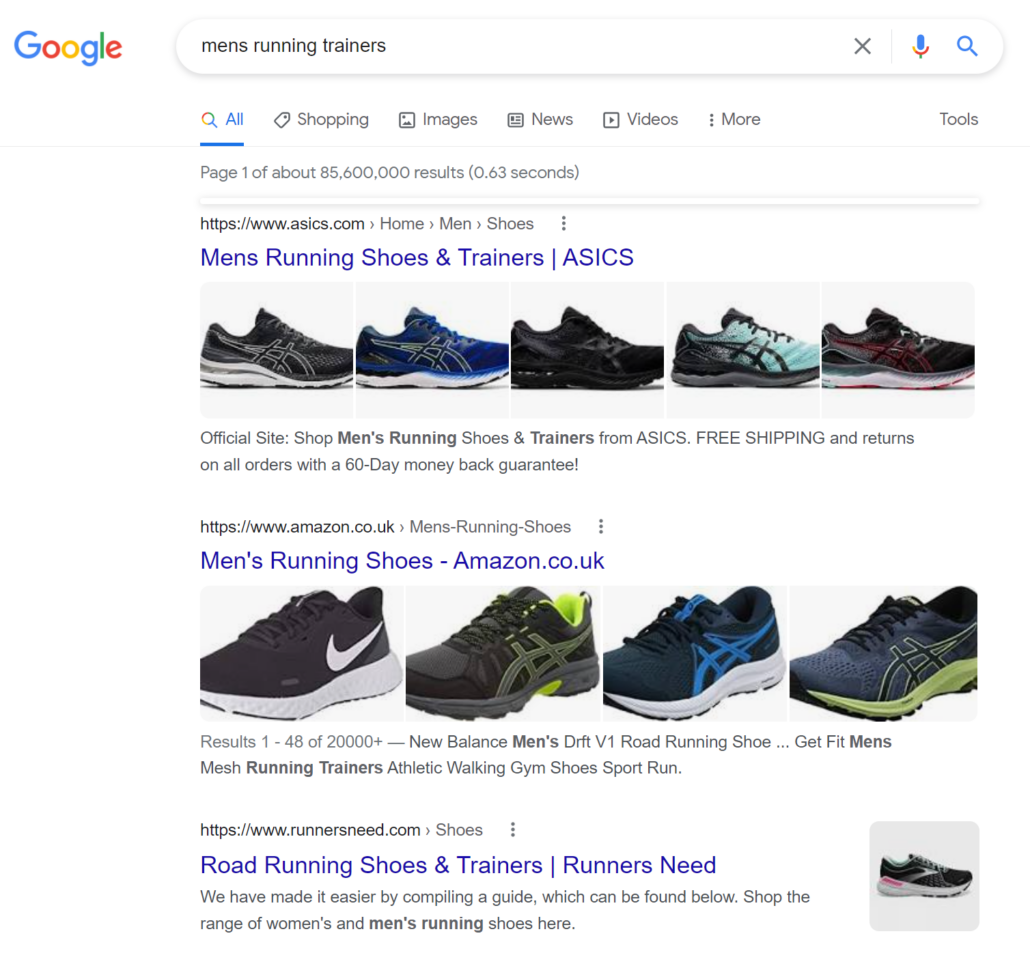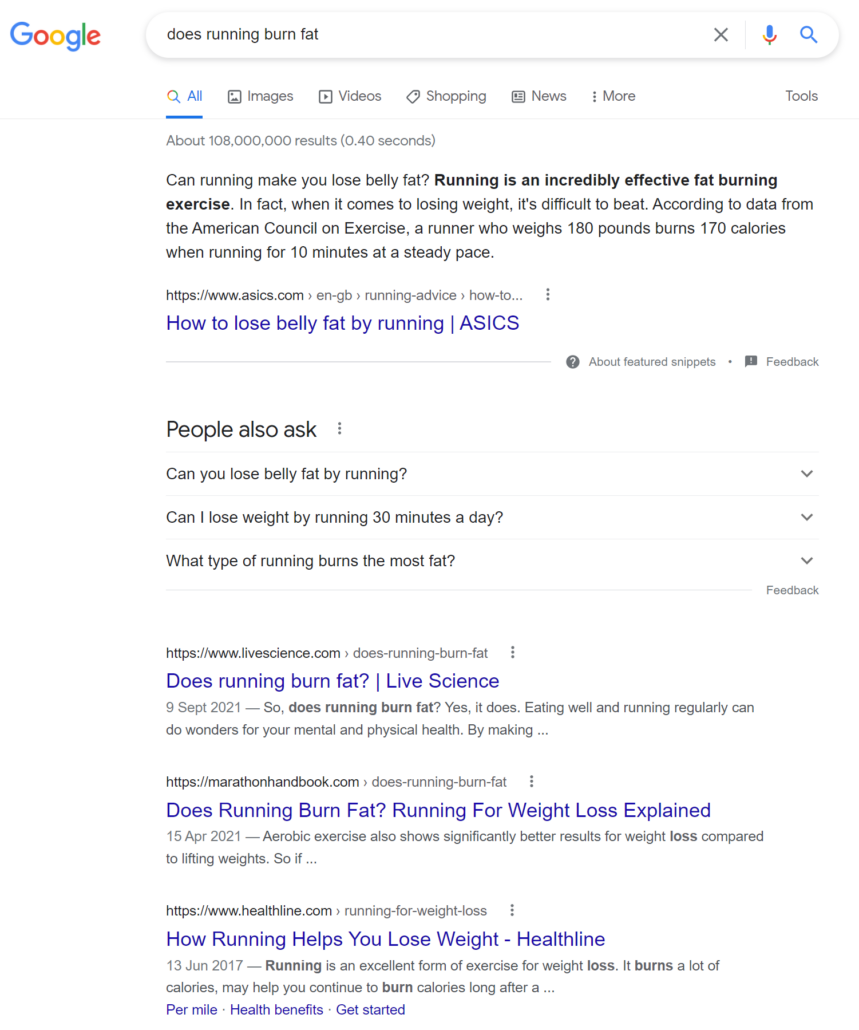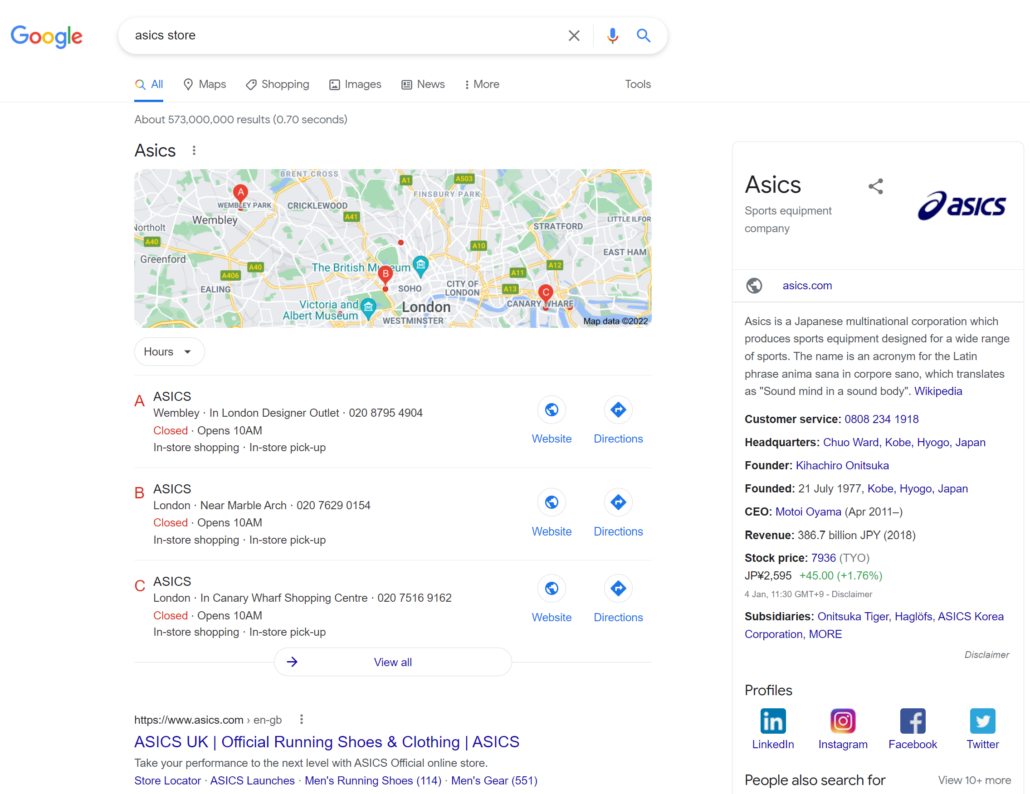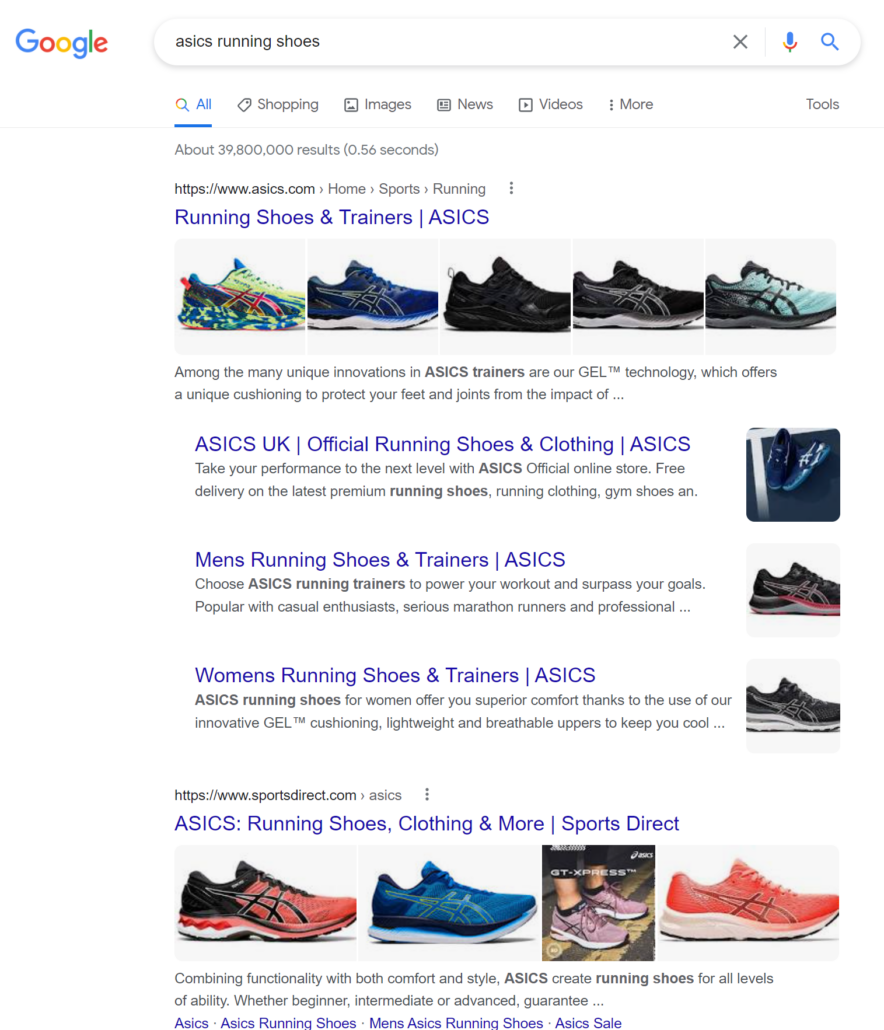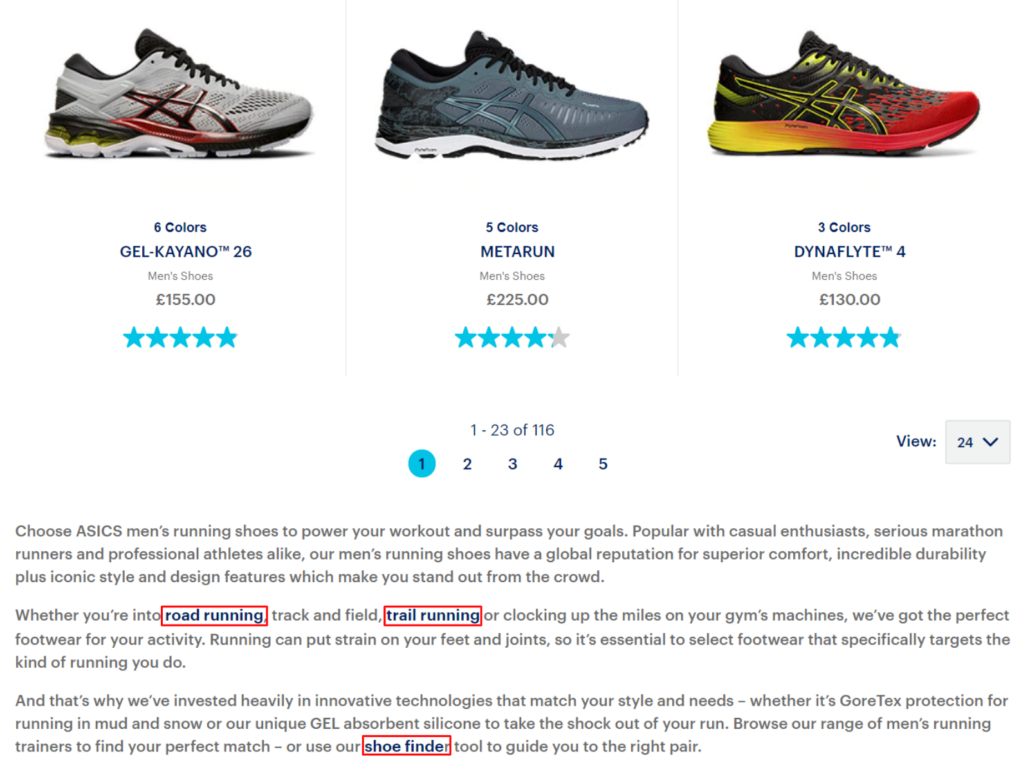Introduction to SEO – How To Optimise Your Website For Google
Did you know that 53% of all trackable website traffic comes from organic search (BrightEdge)? However, according to AHREFs, 90.63% of pages get no organic search traffic from Google. So despite the potential of organic search, many of us still haven’t captured more than double our current traffic levels. Is that because we, as marketers and webmasters, still aren’t sure what SEO is? Or are we just unsure how to optimise our websites for Google?
What Is SEO?
SEO is an acronym for Search Engine Optimization. So, SEO is the process of improving the quality and quantity of a website to get more organic visitors from search engines. Focus has moved from keywords to the user, their consumer journey and solving their problems. The key to success is to create the right content, for the right user, at the right time, to help them resolve their current problems.
Are SEO And SEM The Same?
No. SEO is a type of SEM, but SEM is not SEO. Let’s make that more straightforward.
- SEM stands for Search Engine Marketing, which includes any and all marketing done using a search engine. So this will involve organic and paid search efforts.
- SEO on the other hand stands for Search Engine Optimization, which includes only organic marketing efforts for search engines. So this does not include any paid ads.
So although SEO is a type of Search Engine Marketing, the two are slightly different.
What Does SEO Involve?
SEO involves three core pillars, which work together to help you to increase your ranking in search engines.
- Technical SEO Solving technical issues that prevent crawling/indexing and ranking in search engines
- On-page SEO Creating compelling, accurate and engaging content
- Offpage SEO Building brand awareness and authority through backlinks and digital PR
It is important to remember that these three aspects are equally important for your overall SEO efforts and none will work in isolation. That means that to improve your SEO, thus your ranking in search engines, you will need to work on all three areas. To do that, you will need to understand what each one is and what it will involve.
What Is Technical SEO?
Technical SEO is all about optimizing the technical aspects of your website. All the work you do here is foundational, paving the way for your on-page and off-page optimizations too. That’s because technical SEO work aims to help Google to discover your content quicker and more efficiently so that it can understand it and recognise that users will have a seamless experience with your content too. So, to understand technical SEO fully and what areas you need to work on, you need to understand how search engines such as Google work.
How Google Search Works?
Google works in 3 steps:
- Crawling Google uses a robot, called Googlebot, to discover content from all over the internet. This is known as crawling. The way that Googlebot crawls a website is by visiting its homepage and following all the links on it, then following all the links on those pages, then following all the links on those pages, and so on. This way, eventually Googlebot should discover all of the content on the website. However, there are billions of websites for Googlebot to visit and crawl so it will only spend a limited amount of time on each. This is known as a crawl budget.
- Rendering Once Googlebot finds a webpage, it runs the code and assesses the content, layout, and structure. This will help it to understand what the page is about and support the third and final stage of the process.
- Indexing Once Googlebot has found and rendered a page, Google (not bots) will run algorithms to assess the content on the page. It takes note of around 200 different factors during rendering and indexing, which it will use to give each page a score before storing it in the Search Index. When Google comes to ranking a page, it will use this score from the index to position it in relation to other relevant pages for the search query.
These algorithms are updated constantly, but although Google is always releasing and tweaking its algorithms to be more effective, some updates have more of an impact on how sites rank than others. So, if you hear or see the words ‘Google Algorithm Update’, it is likely that there has been a change made by Google that has had a big impact on a large number of websites from around the world. Indexing is followed by Google assigning a ranking to a page which is not guaranteed. The order or ranking of a page depends on how strong Google considers your page to answer a searcher’s query.
How To Improve Your Technical SEO
Improving your website’s technical SEO should be about improving how Google can crawl, render, and index your site. This includes:
Good Website Architecture Helps Google To Crawl
A clear website architecture, or structure, is important for Googlebot to be able to discover all of your content in the short time that it has. Remember that it will follow all of the links on each page, so having your website well structured and interlinked will help it to find all of your pages. You can do this by having a flat site structure, which means that the majority of pages on your site are a minimal amount of clicks from the home page.

Image credit: Sam Underwood – Visualising SEO
Linking all of your pages together, with menu links and in-text links will also create a good user experience, make sure your content isn’t competing against each other, and encourage crawling of your most important content.
Redirects Support Googlebot Crawling
Having broken pages, including 404 pages, stop Googlebot from continuing its crawl. Instead of being able to follow links on the page, it will have to stop and go back to the last page it found that worked, i.e. returned a 200 response code. This wastes value crawl time and is also frustrating from a user perspective. So, you should redirect any broken pages as soon as possible, for Google and your users. There are two main types of redirects:
- 301 Redirects: 301 redirects indicate that it is a permanent redirect and the old page has been removed. This will tell Google to remove the old page from the index and rank the new one instead.
- 302 Redirects: 302 redirects indicate that it is a temporary redirect and the old page will return. This will tell Google to keep the old page in the index as it will be back.
Page Speed Will Affect Rendering And Indexing
How quickly, or slowly, your pages load will affect how well Google can render your page in order to understand it. It also has a big impact on your users, which makes it even more important for Google. Google has chosen page speed as a ranking factor and it is becoming more and more important in the world of search. There are many different stages to page load, but some of the most important for search engines mainly Google include:
- FCP: this stands for First Contentful Paint, which involves the first bits of content that you see loaded from a blank screen. For a user, this is the first indication that the page is loading, so Google prioritises this stage as being important for its users.
- TTI: this stands for Time To Interactive, which is the time it takes for the content on the page to become interactive and clickable for users. As this stage is so important for users, it is also a pivotal metric for Google.
- CLS: this stands for Culumlative Layout Shift, which is any movement and shift that the content makes as the page finishes loading. A bad CLS can cause a user to click on something just as the CTA moves and therefore be taken to an irrelevant page. The frustration CLS can cause for users is one of the reasons why this stage is important for Google. But your page speed will also affect your users and revenue too. Faster pages are more efficient, help provide a better UX, and convert higher. Pages with long load times have higher bounce rates and lower average time on page.
Read our Introduction To Technical SEO for more guidance on the steps you can take to improve your technical SEO.
What Is On-page SEO?
On-page is all about the content on your web pages and optimising it for keyword usage. The main aim of on-page SEO is to help Google better understand, and therefore rank, your content against a user’s search query. So how well your content answers search queries is key.
To understand on-page SEO and how to improve it, you need to understand the intent behind a search, which is known as search intent.
What Is Search Intent?
When we talk about search intent, we are trying to understand what the customer wants to achieve. We are trying to understand the reason why someone searches for something to understand what they are hoping to find.
People use Google to find something. For on-page SEO, we need to understand whether they are looking for answers, products, or information so that we can create that information for them.
To do this, we can start by categorising search queries into 3 types of intent:
Do -‘Do’ search intent includes:
-
- Commercial intent: whereby a searcher is browsing for the desired services or products E.g. “best running shoes for men”. This often leads to an action which includes a booking enquiry, or a purchase afterwards.
- Transactional intent: whereby a user is searching to achieve an action, often a purchase of products or services. E.g. “mens running trainers” or “buy mens running trainers”
- Commercial intent: whereby a searcher is browsing for the desired services or products E.g. “best running shoes for men”. This often leads to an action which includes a booking enquiry, or a purchase afterwards.
Know
A ‘Know’ search intent, sometimes known as Informational intent, means that the user is searching for more information about a specific topic. For example, “does running burn fat?
Go
A ‘Go’ search intent, sometimes known as Navigational intent, means that the user is looking for a specific brand, product, or other entity. For example, “ASICS store“ or “ASICS running shoes”.
Why is search intent so important?
Search intent analysis is extremely crucial to ensure that the website/page you want to rank contains content that fulfils the right user intent for the keywords and provides the best answer to a searcher’s query in Google, whether the query is Commercial, Transactional, Navigational or purely Informational.
For instance, did you notice how the search term “best running shoes for men” has commercial intent, but results are mostly pages that are a blend of information aided with commercial/transactional elements? This is because a search term can also have multiple search intents, and an analysis of your key head terms helps you identify how best to create your content for that page.
How To Improve Your On-Page SEO
To improve your website’s on-page SEO, you need to conduct keyword research that considers the intent of each keyword and whether you can optimise or create content to satisfy it. This means optimising particular on-page elements of your website including:
- Types of content: Optimizing the type of content you create can help you to better match search intent. For example, landing pages are great for ‘Go’ or ‘Do’ searches intending to convert visitors, increase conversions, and gain signups. Blog posts, on the other hand, are suited for ‘Know’ searches, helping to position the brand as a credible source of information, aiming to capture the users at different stages of the journey and get them to take action.
- Metadata: Each webpage has metadata, which are snippets of text that tells search engines important information about a web page and how it should appear in Google for a search. Metadata is made up of:
- A page title, which gives insight to the page and why it’s relevant to their search. It appears as the blue text in the search results so it is often the first piece of information a user sees. It should be relevant to the topic of your page.
- A meta description – summarises the page content, should inform and interest users to click through to the page. It appears as the grey text under the blue heading under the title in the search results and should start to provide the right content for the user’s query.
- Main Heading: Every webpage should have a main heading. Much like a newspaper article, your heading should be clear and a summary of the page topic using your keyword. This should be in H1 format with any additional page headings as H2, H3, or H4.
- Internal Links:
As well as supporting Googlebot crawling by improving your site architecture, your internal links can also help to frame your content in relation to other topics and keywords. This will help users find additional information and answers, and help Google to understand your content better.
Any and all of the work you do here will be seen by your customers so how you create and optimise your content should also support the customer journey. On-page is all about the content on your web pages and optimising it for keyword usage. The main aim of on-page SEO is to help Google better understand and therefore rank your content against a user’s search query. So how well your content answers search queries is key. So to really understand on-page SEO and how to improve it, you need to understand the intent behind a search, which is known as search intent.
What Is Off-page SEO?
Off-page SEO, as the name suggests, involves working outside of your site to improve your website’s rankings. The aim is to increase your popularity, relevance, trustworthiness, and authority.
To understand how to do this, you need to understand why other websites can affect how well yours ranks.
Why Do You Need To Optimise Outside Of Your Website
Working on another site that you don’t own or run can seem counterproductive to your overall SEO goal. However, working on certain aspects of other websites can help to optimise your own.
It can help if you think about off-page SEO as building up your site’s credentials. That is because there are two important aspects of Google’s ranking algorithm used in the Indexing stage. These are:
- Pagerank: Pagerank is a part of Google’s algorithm used to assess all web content. This is known as a link analysis algorithm that assigns numerical values to all links from one site to another. This is based on several factors like the type of website, industry, credentials, and more. These numerical values help to assign a value of individual pages on your site, which then helps Google to determine which pages, and therefore sites, offer valuable and useful content.
- Domain Authority: Domain Authority, or DA, is a metric developed by Moz, that uses all of the numerical values assigned to pages by the Pagerank algorithm to predict how well a website will rank. The DA score ranges from 1-100, with higher scores indicating a greater ability to rank. However, domain authority is not a metric used by Google and a decent DA may not guarantee higher rankings in SERPs.
How To Improve Your Off-Page SEO?
To improve the numerical values your pages are assigned, and therefore your domain authority, you need to work on your off-page SEO. This involves:
- Gaining Backlinks: Backlinks are links from another website to yours. Websites with more backlinks will usually rank better as they have higher values assigned to them by Pagerank. However, not all backlinks are created equally. So it isn’t just about the number of backlinks that you have, but also the quality of those backlinks.
-
- High-quality backlinks are from relevant and authoritative domains in your niche, from content that is similar to yours. You can use Moz domain authority scores to judge how authoritative a site is before approaching them for a backlink.
- Toxic backlinks are links from unrelated and untrusted sources outside of your niche. A link from any site that has been penalized or violated Google guidelines will harm your website.
-
- Often, PR teams and agencies can help you to gain high-quality backlinks, especially from large news publications.
Your off-page SEO efforts will also support referral traffic as readers of the external content can click through to your content using the link. So gaining backlinks in the right places can improve multiple aspects of your marketing.
Summary
Improving your site’s off-page, on-page, and technical health will support how well search engines can crawl and rank your website when worked on in conjunction with each other. But these days SEO should be data-driven, using market, competitor, and keyword data to inform the work you do. This research will help you to understand key personas, customer journeys, and industry demand to provide the best content and the ultimate user experience.
So optimizing your website to rank in search engines should involve a data-driven SEO strategy that includes on-page, off-page, and technical work.


